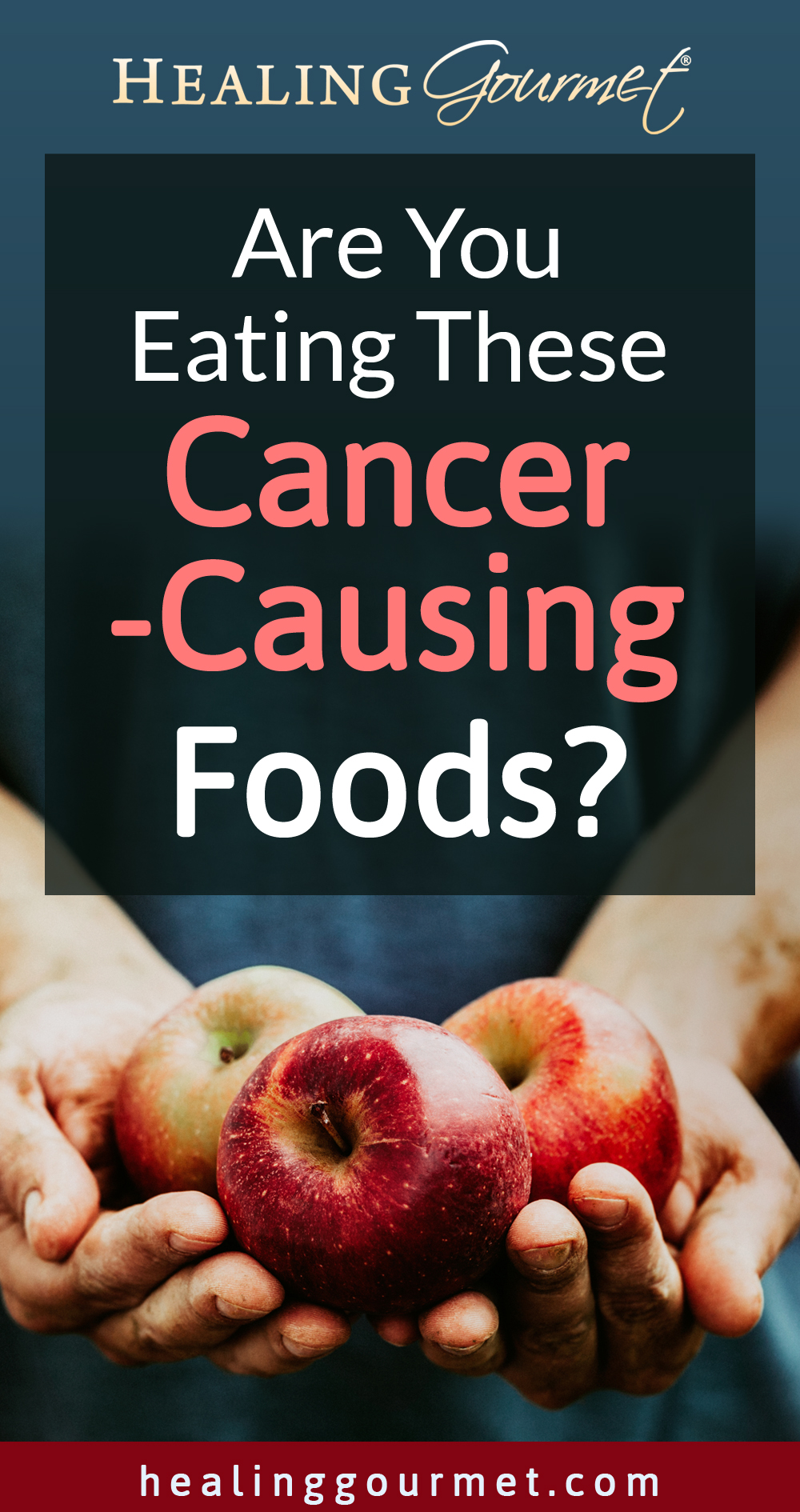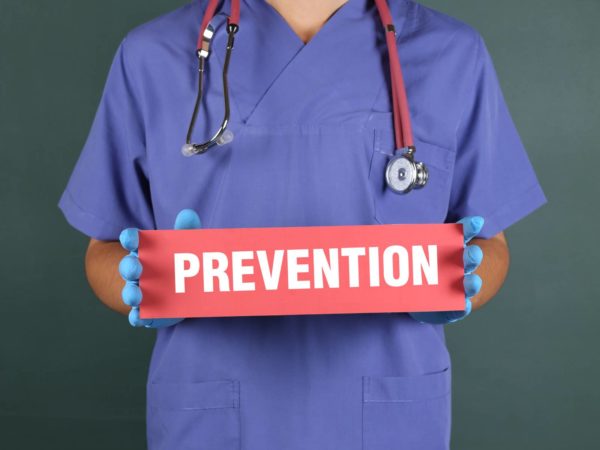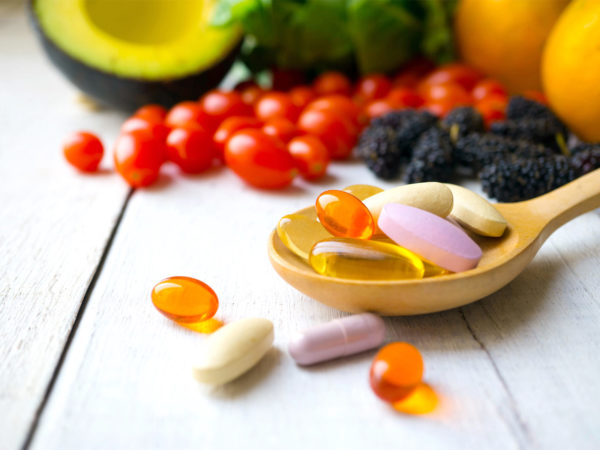Are You Eating These Cancer-Causing Foods?
As mass-produced, low-quality foods have taken over our markets, pantries and plates there has been a steady decline in our collective health. But it’s not just processed, high-carbohydrate foods that are robbing us of our native vitality…
Even so-called “real” foods, when produced with conventional methods, can expose your body to substances that set the stage for chronic illness. Today, we uncover the link between food contaminants and common cancers… plus, the simple ways to protect you and your family.
Cancer is now the leading cause of death in developed countries. And when you consider that only about five percent of cancer can be blamed on genetics alone, it’s clear environmental and dietary factors are responsible for the increasing prevalence.
And when it comes to dietary (and environmental) causes, there is one subtle factor, known to increase the risk for cancers of all kinds…
Recommended: Avoid These 5 Liver-Clogging Foods
Endocrine Disruptors: What You Can’t See Can Hurt You!
Your endocrine system is a complex network of glands and organs that secrete hormones. It is your body’s chemical messaging system, sending signals from one part of the body to another. Your endocrine system is finely tuned and highly sensitive.
Endocrine disruptors – as their name suggests – disrupt hormonal balance by blocking the right signals, or by sending the wrong ones. The results can be as commonplace as acne… or as consequential as cancer.
Unfortunately, endocrine disruptors aren’t listed on the ingredients panel and they can’t be measured in teaspoons, grams – or even with a microscope! What’s more, these compounds accumulate in your body over time, creating a toxic “body burden”.
Here is a quick rundown of common cancer-promoting endocrine disruptors and where they are commonly found:
- Bisphenol-a (BPA): Found in plastics, can liners and other packaging.
- Dioxins: Most common exposure from farmed fish, conventional meat and dairy.
- Organochlorines / Organophosphates: The basis of many insecticides and herbicides.
- Perfluorinated compounds (PFCs): Used in stain and stick-resistant materials, like non-stick pans and grease-resistant food packaging, including microwave popcorn bags and pizza boxes.
- Polychlorinated biphenyls (PCBs): Industrial chemicals now found in oceans and lakes.
- Polybrominated diphenyl ethers (PBDE): Commonly found in farm-raised fish, conventional meat and dairy.
- Recombinant Bovine Growth Hormone (rBGH): Cows naturally produce this hormone. But it’s also produced synthetically and administered to boost milk production.
- Xenoestrogens: Compounds that mimic estrogen and promote hormone-dependent cancers
These chemicals are in our water and soils. They are in the packaging of our foods. They are on our fruits and vegetables. And within many of the animals we eat. They are so prevalent in our modern world, it is impossible to avoid them entirely. But there are ways to limit your exposure and detoxify your body.
We’ll get to that in a moment.
But first, to help you understand why this is so critical, please consider the effect these chemicals can have on your risk for cancer (or that of your offspring and loved ones)…
Prostate Cancer
Prostate cancer is a hormone-dependent cancer and is, therefore, highly influenced by hormones and chemicals that mimic hormones.
- A review of the research on prostate cancer and pesticides, concluded that exposure at levels typically found in agricultural workers is related to higher prostate cancer risk.
- A National Institutes of Health report found that bisphenol A (BPA) exposure during critical windows of development (children, infants and fetuses), can alter brain development, change behavior and increase prostate cancer risk later in life.
- Analysis of PCB tissue concentrations in men with and without prostate cancer, found a significant association between PCB levels and the disease.
Breast Cancer
Because the molecular structure of certain pesticides resembles that of estrogen, these chemicals may attach to estrogen receptor sites in the body and promote cancer.
- A study published in Environmental Health Perspectives found that women exposed to relatively high levels of DDT as early teens were five times more likely to develop breast cancer later in life than women with lower exposures.
- Another study evaluated blood levels of two pesticides (DDT and HCB) in women with breast cancer, compared to a control group of healthy women. Those with breast cancer had significantly higher levels of these chemicals than the healthy cohort.
- A review published in Cancers found that persistent organic pollutants measured in breast tissue were associated with higher breast cancer incidence – and worse prognoses.
- A study published in Food & Chemical Toxicology found that glyphosate promotes the growth of breast cancer. This effect was multiplied in soybeans due to the interaction between the chemical and estrogenic compounds in soy. Keep this in mind when you see the “Beyond Meat” burger and other soy-based fake meats!
- The Journal of Applied Toxicology reports that the non-stick chemicals PFOA and PFOS impact estrogen balance and promote breast cancer by changing gene expression.
Lymphoma & Leukemia
Blood cancers, including lymphoma and leukemia, are also influenced by hormone disruptors. And “the stage” for these cancers is often set during the critical windows of development (which is why it is SO important for expectant and nursing mothers to limit exposure by all means necessary).
Childhood leukemia is the most common cancer diagnosed in children. And while we used to believe it was a “genetic roll of the dice”, many experts now consider childhood leukemia “a preventable disease” linked to toxic exposures.
- The California Childhood Leukemia Study demonstrated a relationship between exposure to insecticides and the risk of childhood leukemia.
- A Swedish analysis also found a relationship between exposure to herbicides, insecticides and glyphosate and increased risk for non-Hodgkin’s lymphoma and leukemia.
- Environmental Health Perspectives published a 35-country study, demonstrating three times higher risk of childhood leukemia among those with the highest PCB exposure.
Brain Tumors & Brain Cancer
The incidence of brain cancer is rising, while the causes of this rise still remain largely “unknown”. However, research shows that brain tumors have altered estrogen receptor activity – and the disease may often be the result of a chemical burden.
- Individuals with more exposure to agricultural chemicals (including those who live in rural areas) have increased risk of brain cancer.
- A French study found that people living close to agricultural crops have greater risk of brain tumors, known as meningioma.
- A study published in Cancer, Causes Control found that maternal exposure to pesticides increased the risk of brain tumors in children. Researchers advise BOTH parents to avoid pesticides to reduce the risk.
Preventing Cancer Naturally
The next time you hear someone say “it’s too expensive to eat organic”, you might advise them to consider that even very small exposures to pesticides, herbicides and fungicides can build up over time and cause VERY “costly” problems for our health.
The choices you make today influence your health tomorrow. More importantly, the choices you make can influence the health of your children and grandchildren.
The good news is that cancer is not a death sentence. There is a LOT you can do to recover from cancer. But PREVENTION is the greatest cure. And that begins with getting back to our ancestral way of living and reducing exposure to cancer-causing threats in our environment.
- Choose to eat meats from animals raised on pasture and verified, low-contaminant, wild seafood
- Opt for organic produce – especially the crops commonly called “the dirty dozen”
- Avoid foods packaged in plastic and cans, opting for glass when possible
- Using inert “safe” cookware – such as glass, cast iron, stainless steel and high-quality enamel
- Use natural household and personal care products (avoid chemical sunscreens, triclosan-based hand sanitizers and fragrance)
- Cook “slow and low” to avoid damaging fragile lipids and reduce cancer-causing byproducts
- Support your natural circadian rhythm by “rising and setting” with the sun
- Sleeping in total darkness and avoid light at night
- Drink and bathe in clean, filtered water (without chlorine or fluoride)
- Get adequate sun exposure to optimize vitamin D levels
- Reduce exposure to EMFs
- Move your body and sweat regularly
In addition to the above steps to prevent accumulation of harmful substances, it’s important to regularly detoxify your body from endocrine disruptors. Here are a few ways to do that:
- Use an infrared sauna
- Boost your levels of “master antioxidant and detoxifier” glutathione with sulfur-rich foods including bone broth, cruciferous veggies, onions and garlic, and the supplement n-acetyl cysteine (NAC).
- Adsorb estrogen-like toxins with activated charcoal and bentonite clay.





Leave a Reply